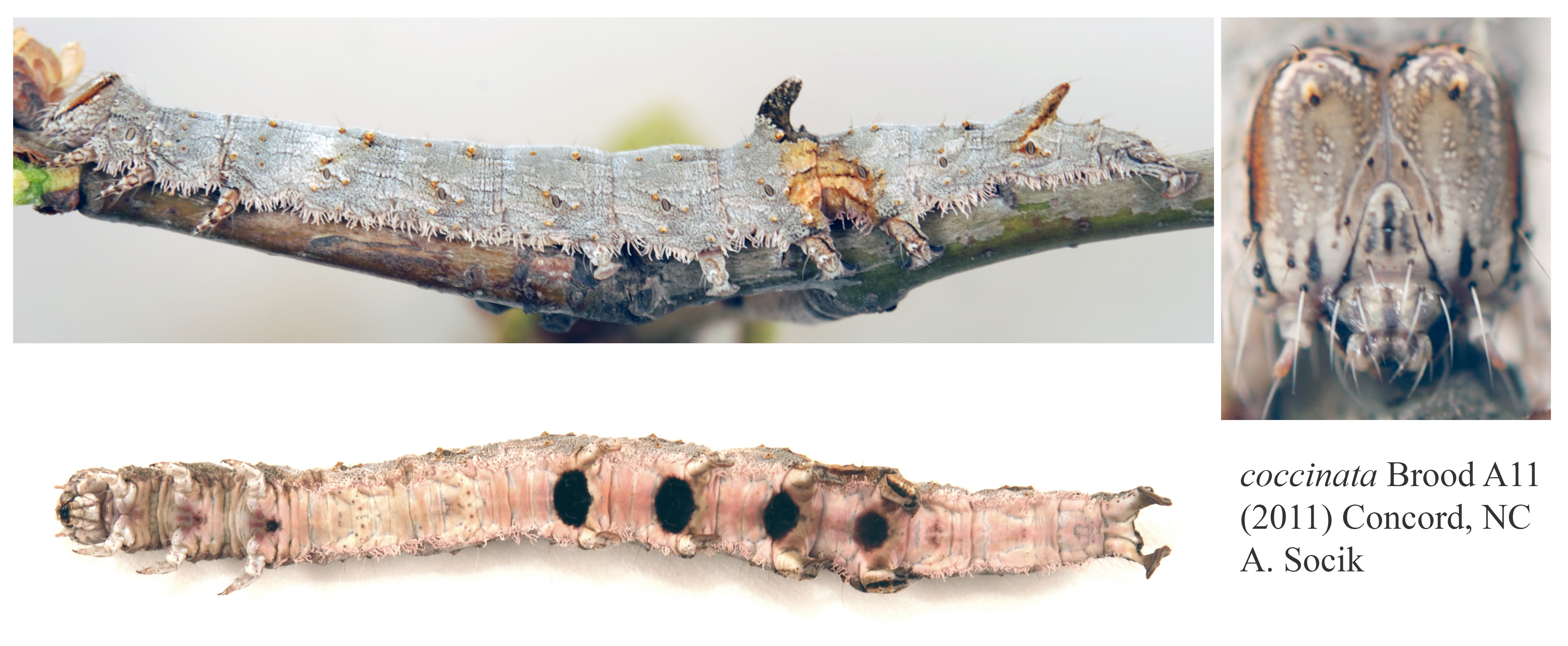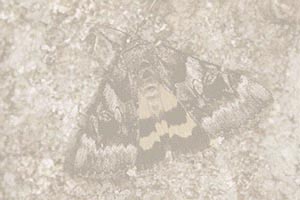 Catocala coccinata
Catocala coccinata
Grote, 1872
Ignoring ilia/umbrosa, larvae of coccinata are the next most recognizable of the oak-feeding Catocala in the eastern
Nearctic. Mature larvae of
coccinata
are substantially larger than other commonly encountered oak species such as
micronympha and
similis,
and the bulbous, fleshy A5 horn is diagnostically coccinata.
Body color gray to grayish brown, varyingly mottled, body striping
indistinct; dense lateral filaments; A5 saddle patch usually prominent, especially so from dorsolateral stripe to
filaments, and often warmer brown; A8 tubercles especially long, large pimply dorsal pinnacula; venter white,
mauve/ink overtone, with large
black spots on A3-A6 only; head capsule with bold black lateral bands extending over top, lobes and frons grayish with
indistinct striping. Recorded from a variety of different Quercus throughout its geographic range.



|


